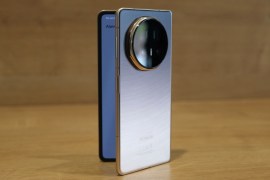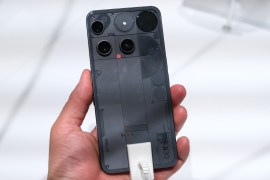Google Pixel 8 and Pixel 8 Pro debut with new looks, more AI photo smarts
Smartphone duo land with Android 14 on board
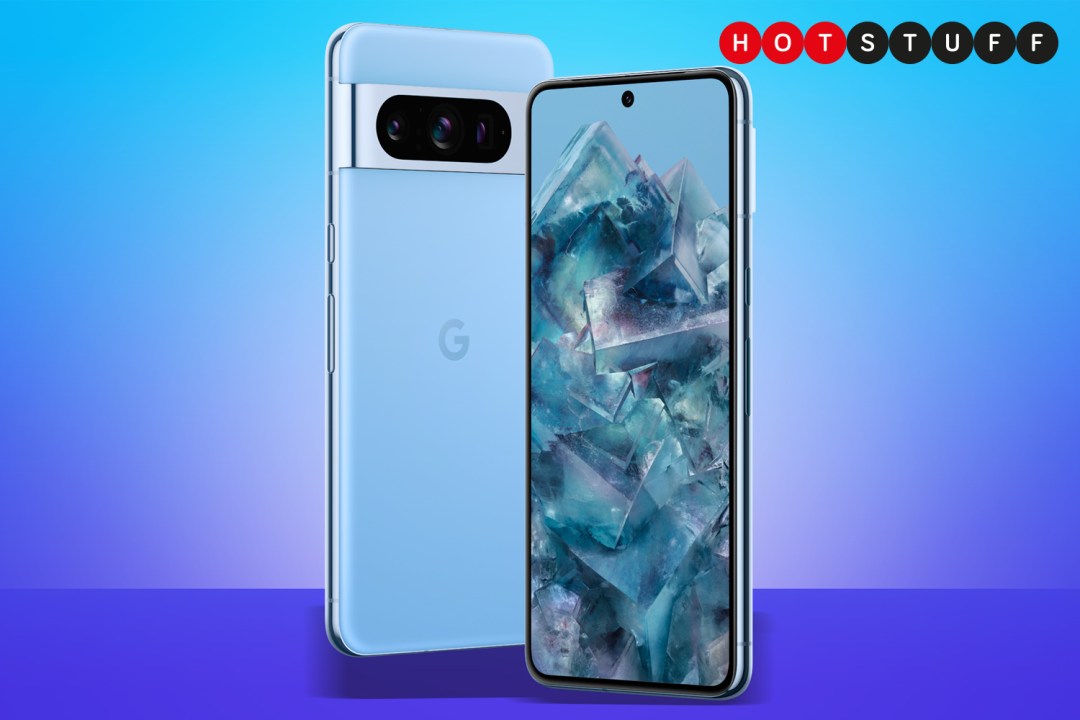
The Google Pixel 8 and Pixel 8 pro are finally official, meaning the final piece of the 2023 smartphone jigsaw has fallen into place. The long-awaited duo bring refined designs, a new version of Android, and iterative camera updates that should help them rival the best that Samsung, Apple and the rest of the phone world has to offer.
Unlike previous generations, however, the Pixel 8 Pro isn’t a value champion flagship. A price increase to $999/£999 has pushed it fully into premium territory alongside the Apple iPhone 15 Pro and Samsung Galaxy S23 Ultra. The $699/£699 Pixel 8 has also seen a price bump.
Pixel 8 Pro
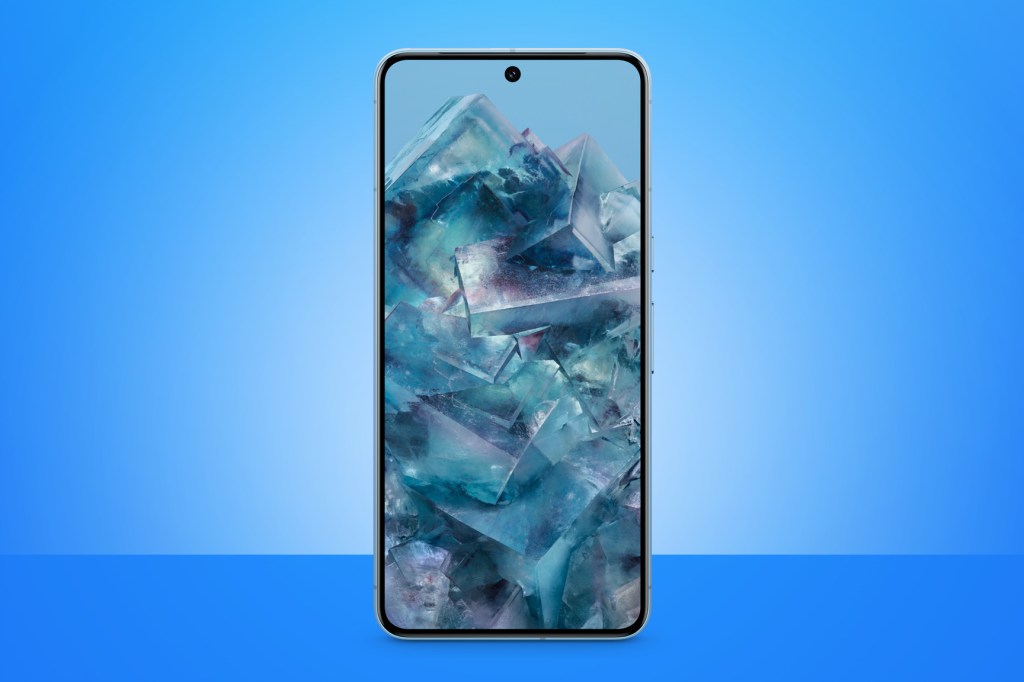
The Google Pixel 8 Pro lands in Obsidian (black), Porcelain (cream) and Bay (blue) colours, with the rear glass now using a fingerprint-resistant matte finish. More dramatically rounded corners instantly set it apart from the previous generation.
It has the more significant visual upgrades of the two phones, having ditched the Pixel 7 Pro‘s curved edge display in favour of a flat panel. The screen is still a substantial 6.7in, but resolution has dropped slightly to 2992×1344. LTPO tech means the 120Hz variable refresh rate can now drop as low as 1Hz to save battery. Google calls it a “Super Actua display”, on account of the astonishing 2400 nits peak brightness. It’ll also do 1600 nits when playing HDR content.
The rear camera shelf has been streamlined, with all three lenses now contained in a single large oval. A new cutout at the side contains a temperature sensor – Google reckons it’ll be handy for quickly measuring drinks, cooking pans and bath water.
Those cameras receive new sensors, with the 50MP main snapper promising 21% better low light sensitivity. The 48MP telephoto remains god for 5x optical zoom, but now promises cleaner zoomed-in shots at night. The ultrawide sees the biggest change, with pixel count jumping to 48MP and light-gathering improved by 105%. It can now manage macro shots from as close as 2cm, too. Finally the front-facing selfie camera has gained autofocus for the first time.
Bigger upgrades are found on the software side. An AI-based Best Take function pulls facial expressions from multiple frames to create composite pics where everyone in shot is looking at the camera. Google has also added a full set of manual controls for the first time and support for 50MP photos throughout the zoom range – but only for the Pixel 8 Pro. The vanilla Pixel 8 misses out. It’ll eventually also use the cloud to improve any low-light videos in a future update.
Both Pixels get Google’s latest home-grown Tensor G3 processors, which promise more grunt than their predecessors while also being more power efficient – something the Pixel 7 series struggled with. It’s paired with 12GB of RAM and 128, 256, or 512GB of on-board storage, while US customers can also get their hands on a 1TB model. Raw performance will almost certainly slot underneath rivals that use Qualcomm’s flagship Snapdragon 8 Gen 2, but Tensor’s AI optimisations should help keep Android running smoothly.
The Pixel 8 series launches with Android 14, which is also being made available for older Pixel devices right away. There’s a big focus on customisation this year, with new lock screen templates, a monochromatic theme that dials back the UI colours, and support for Ultra HDR images. The Pixel 8 and Pixel 8 Pro are first in line for AI-generated wallpapers, too.
Battery capacity is now 5050mAh, a minor boost from last year, and Google says the phone can handle 30W charging over USB-C. Naturally the Pixel 8 Pro still supports wireless and reverse wireless charging.
Pixel 8
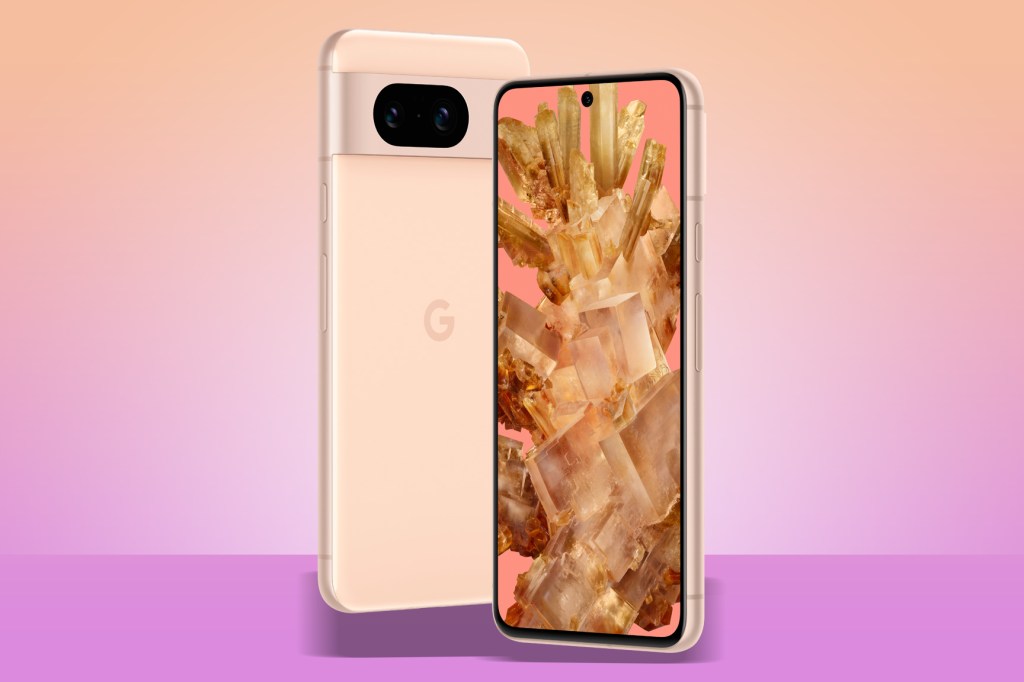
The Google Pixel 8 remains the more mainstream model, dropping the Pro’s third rear camera sensor and making a few other hardware cuts. It lands in Obsidian, Rose, and Hazel colours.
Screen size has shrunk to 6.2in (down from 6.32in on the Pixel 7), but it keeps the same 2400×1080 resolution and still uses AMOLED panel tech. Refresh rate has climbed from 90Hz to a smoother 120Hz, but it can only toggle between 120Hz and 60Hz – there’s no fully variable mode here. The Actua Display brightness tech means a peak 2000 nits here, or 1400 nits for HDR content.
The dual camera setup uses a 50MP wide angle lens and 12MP ultrawide, which gains Macro Focus for the first time. Last year you’d have to step up to the Pro model to get such close-up shooting abilities. The 10.5MP selfie cam remains as fixed focus, though.
Storage options are either 128 or 256GB, with both versions getting 8GB of RAM. The 4575mAh battery is a small capacity hike over last year’s effort, and supports 30W USB-C charging as well as wireless top-ups.
Both phones are available to pre-order right now, and will be on sale from the 12th of October.

